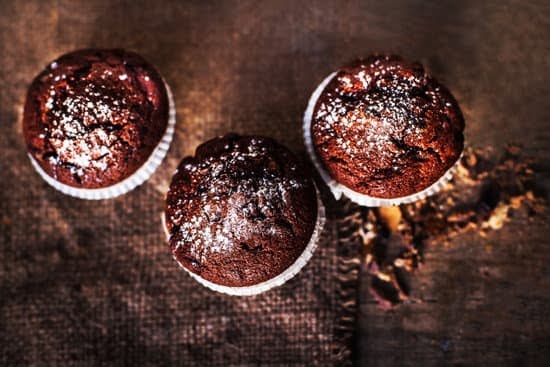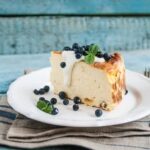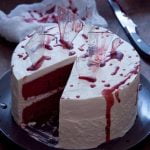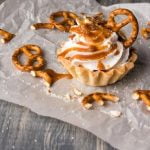Are you a beginner looking to learn how to decorate cakes? Whether you want to impress friends and family or turn your passion into a professional skill, mastering the art of cake decorating can be a rewarding and enjoyable endeavor.
In this article, we will explore the essential tools and equipment needed for beginners, the various cake bases and frostings to consider, basic decorating techniques to start with, and tips for troubleshooting common mistakes. By the end of this guide, you’ll be equipped with the knowledge and confidence to create beautifully decorated cakes that are sure to wow your loved ones.
Cake decorating is not just about making a delicious treat look visually appealing; it’s also an opportunity for artistic expression. From choosing the right flavor combinations to creating intricate designs with piping and icing, every step in the process allows for creativity and personal flair. Whether you’re preparing for a special occasion or simply want to elevate your baking skills, mastering the basics of cake decorating is an invaluable skill that will open up a world of possibilities.
As a beginner, it’s normal to feel overwhelmed by the myriad of tools, techniques, and options available for cake decorating. However, with the right guidance and practice, you’ll soon discover that creating beautifully decorated cakes can be both enjoyable and fulfilling. With patience and perseverance, you’ll find joy in transforming simple cakes into stunning works of art that delight both the eyes and taste buds. So let’s dive into the exciting world of cake decorating.
Essential Tools and Equipment for Beginners
If you are a beginner in the art of cake decorating, having the right tools and equipment is essential for creating beautiful and professional-looking cakes. Here are some must-have items to get you started on your cake decorating journey.
First and foremost, you will need a good quality turntable to make it easier to frost and decorate your cakes evenly. A set of offset spatulas in different sizes is also essential for smoothing frosting and adding intricate details to your cakes. Additionally, investing in a few piping bags and various tips will allow you to create different designs with buttercream or royal icing.
For precise measurement and mixing, a good set of measuring cups and spoons, as well as mixing bowls in different sizes, will come in handy. And don’t forget about a sturdy cake stand or presentation board to showcase your beautifully decorated creations.
When it comes to keeping your finished cake fresh and protected, having cake boxes in various sizes at your disposal will ensure that your masterpiece arrives at its destination looking just as stunning as when it left your kitchen. These basic tools and equipment will help you get started on learning how to decorate cakes for beginners. With practice and dedication, you’ll be creating impressive cakes in no time.
Choosing the Right Cake Base and Frosting
When it comes to learning how to decorate cakes for beginners, choosing the right cake base and frosting is crucial in achieving a beautifully decorated cake. Different types of cakes and frostings can greatly affect the outcome of your decoration, so it’s important to understand the basics before diving into cake decorating.
Understanding Cake Bases
The first step in choosing the right cake base is understanding the different types of cakes available. From sponge cakes to butter cakes, each type of cake has its own texture and flavor profile that can enhance or hinder your decorating efforts. For beginners, starting with a basic vanilla or chocolate cake can be a great way to practice decorating techniques without worrying about more delicate cake bases.
Exploring Frosting Options
Once you’ve chosen your cake base, selecting the right frosting is equally important. Buttercream, cream cheese frosting, and fondant are just a few options available for decorators. Buttercream is often recommended for beginners due to its versatility and ease of use. It’s essential to understand how each type of frosting behaves when decorating, as some may require different techniques or tools.
Pairing Cake Base With Frosting
Finally, understanding how to pair your cake base with the right frosting is key in achieving a harmonious and deliciously decorated cake. Some combinations work better than others, so it’s essential to experiment and find the perfect pairing for your desired decorations.
By mastering the art of choosing the right cake base and frosting for your decorating projects, beginners can create stunning cakes that serve as a blank canvas for their creativity and imagination. Learning how to combine different flavors and textures will ultimately lead to beautifully decorated cakes that not only look amazing but taste delicious as well.
Basic Cake Decorating Techniques
When it comes to learning how to decorate cakes for beginners, mastering the basic cake decorating techniques is essential. These techniques form the foundation for creating beautifully decorated cakes that are sure to impress your friends and family. Here are some basic cake decorating techniques to get you started:
1. Crumb Coating: Before applying the final layer of frosting or icing, it’s important to crumb coat your cake. This involves applying a thin layer of frosting to seal in any loose crumbs, creating a smooth surface for the final decoration.
2. Smooth Frosting: Achieving a smooth and even layer of frosting on your cake can be challenging for beginners. Use an offset spatula to apply the frosting in small, even strokes, working from the top of the cake down the sides.
3. Layering: Adding multiple layers of frosting or icing can create a beautiful ombre effect on your cake. Start with a base color and gradually add lighter or darker shades as you work your way up the cake.
Learning these basic cake decorating techniques will give you a solid foundation for creating beautifully decorated cakes that look as good as they taste.
Remember that practice makes perfect when it comes to mastering these techniques, so don’t be discouraged if your first few attempts aren’t exactly flawless.
Adding Flair With Piping and Icing Designs
Once you have mastered the basic cake decorating techniques, it’s time to elevate your skills by adding flair with piping and icing designs. Piping is the process of using a pastry bag and decorative tips to create intricate designs on a cake, while icing designs involve using various techniques to add visual interest and texture to your cake’s surface. Here are some tips on how to decorate cakes for beginners using piping and icing designs.
First, familiarize yourself with different types of pastry bags and tips that are commonly used in cake decorating. For beginners, it’s best to start with a few basic tips such as round, star, and leaf tips before moving on to more complex designs. Practice piping on a piece of parchment paper or a smooth surface to get comfortable with holding the pastry bag at the right angle and applying consistent pressure.
Next, experiment with different types of icing consistency to achieve different effects. For example, stiff royal icing is great for creating intricate details and 3D decorations, while medium-consistency buttercream is ideal for making swirls, rosettes, and other textured designs. By varying the consistency of your icing and experimenting with different tips, you can create an endless array of unique designs on your cakes.
To add flair with piping and icing designs, consider incorporating color into your creations. Use gel food coloring to tint your icing in various shades and practice creating multi-colored designs such as ombre effects or gradient patterns.
You can also use edible glitter, sprinkles, or edible pearls to add a touch of sparkle and dimension to your cake decorations. Remember that practice makes perfect when it comes to mastering piping and icing designs, so don’t be afraid to experiment and have fun with creating beautiful works of edible art.
Incorporating Edible Decorations and Toppers
Decorating a cake with edible decorations and toppers can add an extra layer of creativity and flair to your creation. From fresh fruit to chocolate shavings, there are countless options for embellishing your cake with edible items. Here are some simple ideas for incorporating edible decorations and toppers into your cake decorating projects:
- Fresh Fruit: Adding fresh fruit such as berries, sliced kiwi, or citrus wedges can add a pop of color and a refreshing flavor to your cake. Consider arranging the fruit in a decorative pattern on top of the frosting or around the base of the cake for a visually appealing presentation.
- Chocolate Shavings: Create delicate chocolate shavings using a vegetable peeler and a bar of chocolate. Gently drag the peeler across the surface of the chocolate to create thin curls, which can be sprinkled over frosted cakes for an elegant touch.
- Edible Flowers: Certain flowers such as violets, pansies, and nasturtiums are edible and can be used to decorate cakes for a stunning natural look. Be sure to source these flowers from reputable sources that guarantee they are safe for consumption.
In addition to these options, you can also explore using edible glitter, gold leaf, or even small candies to add personality and pizzazz to your cakes. When incorporating edible decorations and toppers, it’s important to consider the flavors and textures they will add to the overall eating experience of the cake. Experiment with different combinations until you find the perfect balance of visual appeal and deliciousness when using how to decorate cakes for beginners.
Remember that while it’s fun to get creative with edible decorations, it’s important not to overwhelm the cake with too many elements. Keep in mind that less is often more when it comes to decorating with edibles – focus on quality over quantity for a visually striking finished product.
Troubleshooting Common Cake Decorating Mistakes
Cracked or Uneven Frosting
One common mistake in cake decorating is ending up with cracked or uneven frosting. To avoid this, make sure that your cake is completely cooled before applying the frosting. The warmth of the cake can cause the frosting to melt and become lumpy.
Additionally, it’s important to apply a thin layer of frosting as a base coat before adding more layers. This will help to even out any imperfections in the cake surface and provide a smooth foundation for the rest of your decorations.
Runny or Watery Icing
If you find that your icing is too runny or watery, it may be due to adding too much liquid to your icing mixture. To remedy this, try adding more powdered sugar to thicken it up. You can also add a small amount of cornstarch to help absorb excess moisture. Another reason for runny icing could be high temperatures in your kitchen, so try working in a cooler environment when decorating cakes.
Lopsided Layers
When assembling a layered cake, one common mistake is ending up with lopsided layers that are not evenly stacked. To avoid this, use a serrated knife and gently trim off any uneven edges before assembling the layers. You can also use toothpicks inserted into the center of each layer to help keep them aligned as you stack the cake. Finally, apply an even layer of frosting between each layer to create stability and ensure an even result.
By understanding how to troubleshoot common cake decorating mistakes, beginners can improve their skills and achieve professional-looking results when decorating cakes at home. With patience and practice, these issues can be easily overcome, allowing for beautiful and delicious creations that will impress friends and family alike.
Tips for Successful Cake Decorating Projects
Are you new to the world of cake decorating? Whether you’re looking to impress your friends and family with beautifully decorated cakes or considering a future in professional baking, learning how to decorate cakes for beginners is an exciting journey. In this section, we’ll provide you with some helpful tips for successful cake decorating projects that will help take your skills to the next level.
First and foremost, practice makes perfect when it comes to cake decorating. Don’t be discouraged if your first few attempts aren’t as flawless as you’d hoped – every expert was once a beginner. Set aside time each week to experiment with different techniques and designs. The more you practice, the more confident and skilled you’ll become.
Another tip for successful cake decorating projects is to invest in high-quality tools and equipment. While it’s possible to create beautiful cakes with basic supplies, having the right tools can make the process much easier and more enjoyable. Look for a good set of piping tips, offset spatulas, and turntables to help you achieve professional-looking results.
Lastly, don’t be afraid to get creative with your designs. Experiment with different colors, textures, and decorative elements to make your cakes stand out. Whether it’s mastering buttercream flowers or experimenting with intricate icing patterns, the key is to have fun and let your imagination run wild. With these tips in mind, you’ll be well on your way to creating stunning cakes that are sure to impress anyone who sets eyes on them.
Conclusion
In conclusion, learning how to decorate cakes for beginners can be a fun and rewarding experience. With the right tools, techniques, and practice, anyone can create beautifully decorated cakes that are not only visually appealing but also delicious. The key is to start with the basics and gradually build upon your skills as you become more comfortable with cake decorating.
Choosing the right cake base and frosting is essential for a successful decorating project. Whether it’s a simple vanilla or chocolate cake, or a more complex flavor like red velvet or carrot cake, the foundation of your cake sets the stage for your decorations. Similarly, selecting the right frosting that complements the flavor of your cake is crucial. Experimenting with different types of frosting and flavors will help you develop your personal style as a cake decorator.
Adding flair with piping and icing designs can take your cake decorating to the next level. Mastering basic piping techniques such as borders, dots, stars, and writing will allow you to create intricate designs on your cakes.
Furthermore, incorporating edible decorations and toppers such as fresh fruit, flowers, or themed figurines can add an extra element of creativity to your creations. By following these essential tips for beginners in cake decorating, you can confidently embark on your journey to creating stunning cakes for any occasion.
Frequently Asked Questions
What Does a Beginner Need for Cake Decorating?
A beginner cake decorator needs basic tools like a turntable, offset spatula, piping bags, and tips to start. It’s also helpful to have a good quality frosting or icing and some basic decorating skills.
How to Easily Decorate a Cake?
Decorating a cake can be made easy by starting with a smooth layer of icing, using simple techniques like piping borders or rosettes, and adding decorative elements like sprinkles or edible flowers. Practice makes perfect!
What Are the 7 Different Cake Decorating Techniques?
The 7 different cake decorating techniques include icing a smooth coat, creating textured effects with a comb or scraper, piping intricate designs with different tips, using fondant for sculpting shapes or covering cakes, creating edible images with stencils or printing, airbrushing for colorful effects, and adding embellishments like flowers or figurines. Each technique requires practice and patience to master.

Welcome to our cake decorating blog! My name is Destiny Flores, and I am the proud owner of a cake decorating business named Cake Karma. Our mission is to provide delicious, beautiful cakes for all occasions. We specialize in creating custom cakes that are tailored specifically to each customer’s individual needs and tastes.





